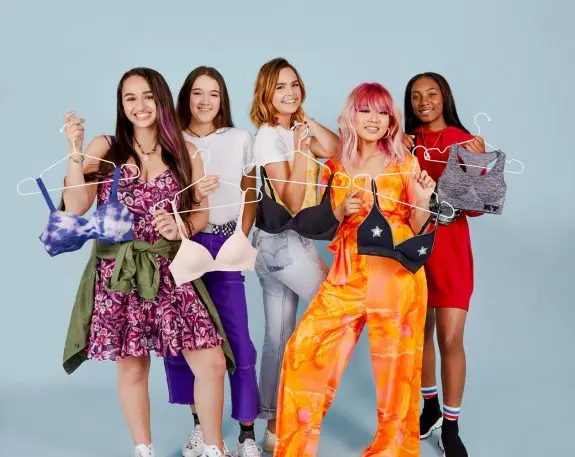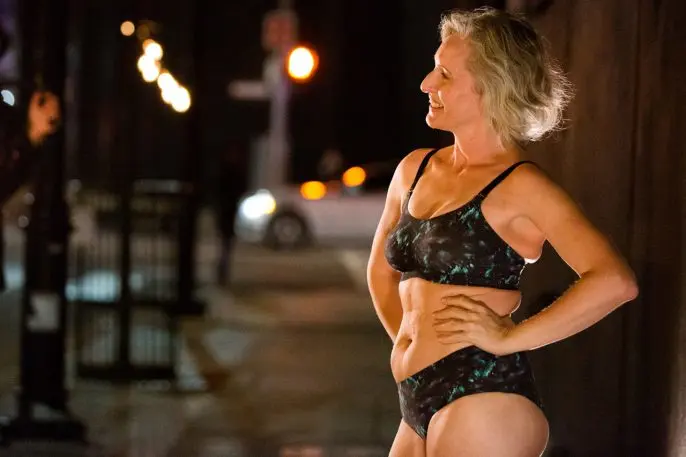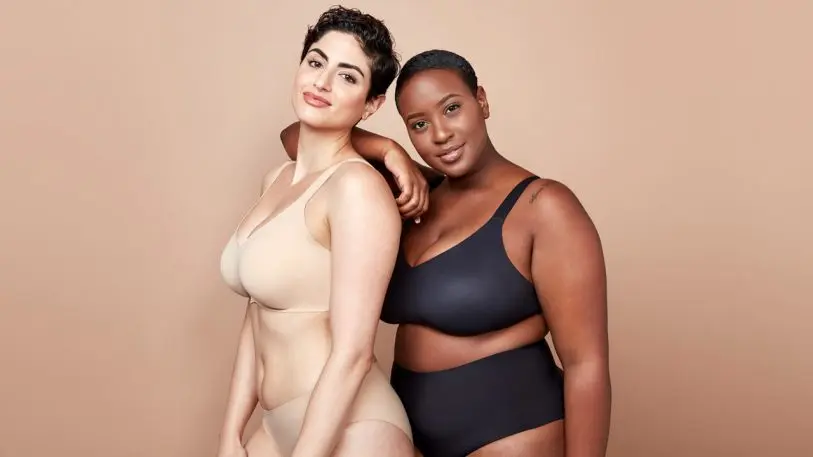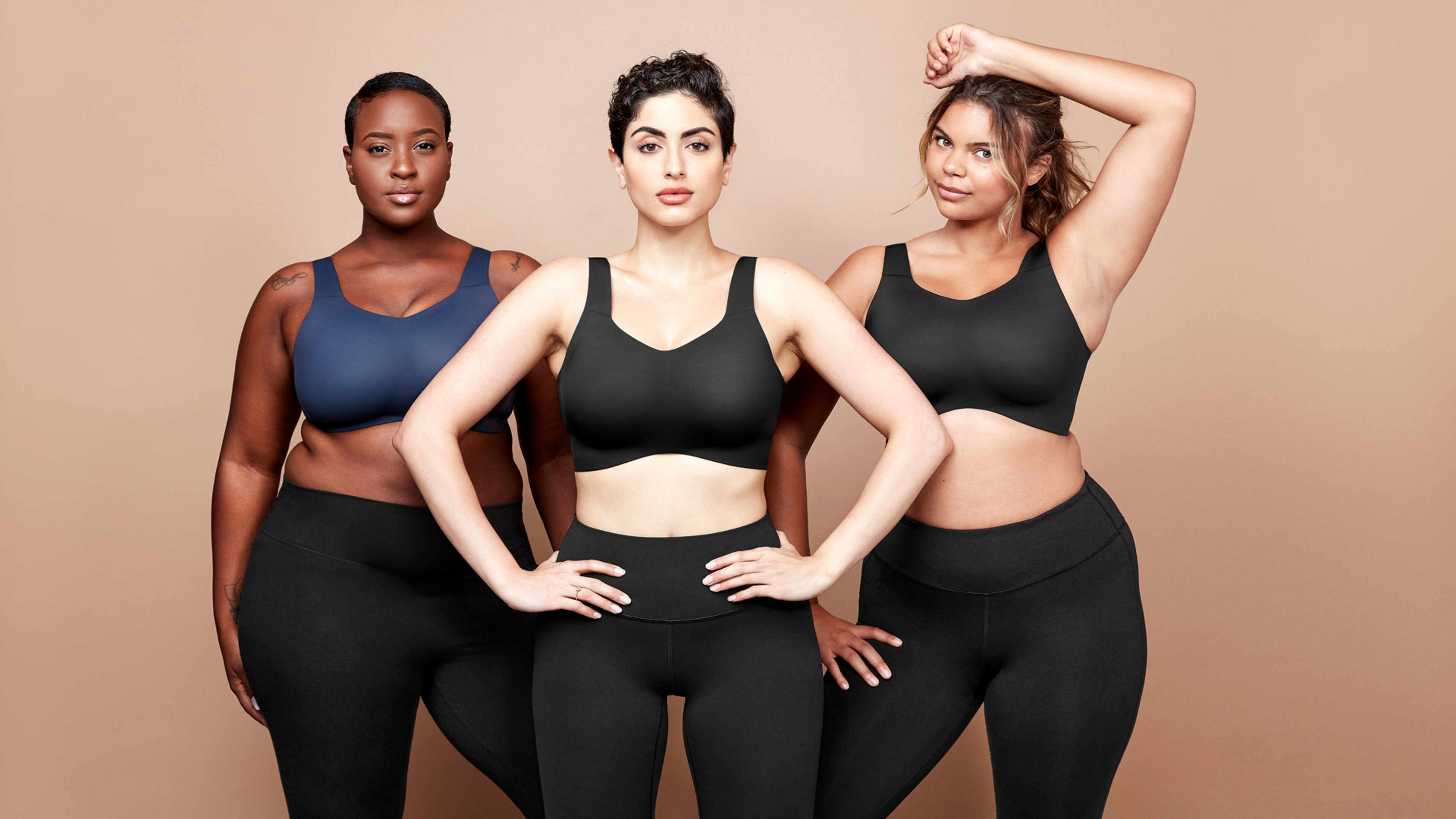On Mother’s Day this year, the unthinkable happened to Joanna Griffiths, founder and CEO of five-year-old underwear brand Knix: At 10 weeks pregnant, she noticed blood on her underwear. Later that day, after six hours and two ultrasounds, the nurse told Griffiths and her husband that she was having a miscarriage. And that she should expect a little more bleeding.
“She was wrong,” Griffiths tells me. “I felt like I was hemorrhaging. I bled through five super maxi overnight pads and three pairs of pajamas.”
As the head of a fast-growing, self-funded startup, Griffiths was regularly working 12-hour days. Knix currently sells an item every 10 seconds, and is on track to ship half a million orders this year alone. She currently has 37 employees, but needs to get to 50 by the end of the year to keep up with the brand’s growth.
Griffiths wondered whether she had somehow brought on the miscarriage by pushing herself too hard or traveling too much. (Nearly half of women wrongly blame themselves for pregnancy losses.) She decided to do something with her pain: She began working on an advertising campaign for Knix around the issue of fertility, where women would openly share their struggles. “I wanted women to be able to talk about all of it out in the open,” Griffiths tells me.
In a video that launches today on Knix’s website and Instagram channels, Griffiths shares her own story. But the campaign also features interviews with 50 other Knix customers talking about wide-ranging topics related to fertility. Some talk about desperately wanting to have a baby but not being able to. In a round table discussion, three women talk about how they have no intention of having children at all: “There’s this sense that I’m less of a woman because I don’t want to be a mother,” one of them says.
Knix bills itself as a brand reinventing intimates with functional details, like panties that absorb period blood or incontinence leaks, and bras that provide support without any wires. But Griffiths’s ambition with Knix is bigger than just trying to reimagine women’s underwear. Through the company’s social channels and advertising, she’s also creating a community of women–online and offline–focused on embracing their bodies as they are.

The brand’s Instagram page is full of row after row of real customers, proudly displaying stretch marks from weight gain or loss, and diastasis recti–a bulge in the middle of the abdomen from their stomach stretching out during pregnancy. One woman, Nikki McKean, is topless, highlighting a chest flattened after her double mastectomy because of breast cancer. “Women are not just their bodies and their breasts and whatever they come with,” she says in the caption. “The power of femininity is within.”
“I decided not to use professional models early on,” Griffiths says. “And, surprisingly, women seemed to gravitate towards us because we were grittier and less polished than other brands. I think that’s when I realized that there was something more powerful going on than underwear: This brand could be part of a movement.”

The transformation of an industry
Knix is part of a wave of startups transforming the intimates industry, bridging the gap between the sexy branding embodied by Victoria’s Secret and the boring functionality of Hanes and Fruit of the Loom. Victoria’s Secret, which was founded in 1977, still dominates the North American market. Last year, the company generated $7.78 billion in revenue, which still makes it the biggest player in the $12 billion lingerie industry. But it’s been steadily losing market share. Last year, sales at the brand decreased by 8%.
Analysts have provided a range of reasons for Victoria’s Secret decline. Some describe the poor make of the products, while others point out that the brand has invested heavily in more than a thousand stores throughout North America at a time when consumers aren’t visiting malls. But it is also possible that Victoria’s Secret’s marketing isn’t resonating with today’s consumers. The mega-brand has built its identity on highly sexualized advertising, with many catalogues dripping with a boudoir aesthetic. Consider its flagship event: an annual runway show where supermodels strut wearing enormous angel wings and diamond-encrusted bras. In the #MeToo era, the event–and the idea behind it–seems a little retrograde. Many women may simply be choosing to stop supporting a brand that does not reflect their values by buying their bras and undies elsewhere.
Dozens of startups have rushed to stake a claim to Victoria’s Secret’s shrinking market share. Among the new crop of startups are TomboyX, founded in 2012 to create androgynous-looking underwear for women; Thinx, which launched in 2014 offering period underwear; and Lively, founded in 2015 by a former Victoria’s Secret executive. All of these brands have made women’s empowerment part of their brand in some way. Rather than suggesting that women buy underwear simply to look sexy for their partners, these companies focus on the comfort of their products. All of them also support body positivity, using diverse, inclusive models in their ads.
Thinx was perhaps the loudest and most visible of this generation of startups thanks to Miki Agrawal, the brand’s charismatic founder, who regularly made media appearances to publicize her brand. Agrawal’s mission was to destigmatize periods, both by making leakproof period panties, but also by creating a cultural conversation about menstruation. In 2015, Thinx plastered New York subways with large ads featuring runny eggs and grapefruit suggestive of women’s reproductive parts, followed by conversation starters like: “There’s a 1 in 12 chance that you are on your period right now, yet we rarely discuss menstruation outside of whispers woman to woman.”
But last year, Agrawal was ousted from her role as CEO after several employees at the company accused her of sexually harassing them by inappropriately touching their breasts and regularly appearing nude in front of them. All of this came as a blow to Thinx fans, who supported the brand not just because of the products, but because they believed in its feminist mission. Since Thinx’s board appointed a new CEO, tech veteran and Harvard MBA Maria Molland, the brand hasn’t made headlines or launched any ambitious ad campaigns. This creates space for other lingerie brands to make some noise.
And Griffiths isn’t wasting the opportunity.

Knix on the rise
Throughout Thinx’s rise and fall, Knix was growing quietly. In the first few years after launch, Griffiths focused on getting Knix’s business model right, developing new products, and building a community of loyal customers. (Knix has been self-funded from the beginning, although Griffiths is considering institutional funding now, to scale the business.)
Griffiths came up with the idea for Knix in her early twenties over a chat with her mother, a doctor, who described how women’s bodies change drastically throughout their lives. It dawned on Griffiths how terrible it is that so many common experiences that women go through, from menstruation to incontinence (which affects one in five women), are taboo. And many companies weren’t creating products–or brands–that supported women through all of this. This planted a seed in Griffiths’s mind: She would one day start a company that addressed these problems.

In 2012, while getting an MBA at the French business school INSEAD, Griffiths began developing a business plan. She started surveying women she knew about the underwear they wished they had. “While my friends were out drinking cocktails, I was holed up in the library visiting internet chat rooms, asking women about their needs,” she recalls. “When they started to feel comfortable, all of these gripes started pouring out of them. They hated that they had to buy what amounted to adult diapers when they got incontinence after giving birth; they hated that period panties all looked like granny panties.”
Griffiths designed thin, aesthetically pleasing panties using performance fabrics that had a layer to absorb urine. She then tweaked the design to create a separate period panty version, and then yet another seamless, moisture-wicking version for working out. She then spent months traveling the world looking for the right factory partner to manufacture her first line of Knix undies, which launched in 2013. “I learned that urine, blood, and sweat flow out of the body at different rates,” she says. “The challenge was creating a product that was perfectly adapted to absorb each of these fluids.”
At first, Griffiths sold her products, which come encased in a tube container and cost a little over $20 a pop, through department stores, boutiques, and workout studios throughout the United States and Canada. While the brand was growing steadily–selling thousands of pairs a year–Griffiths was frustrated by how little she knew about her customers. She didn’t have any information about who they were and she couldn’t get their feedback to improve products.
So Griffiths tried something new. To launch Knix’s first bra–a wireless design that could be adapted eight ways and could handle light workouts–she decided to skip retailers altogether and create a Kickstarter campaign, with a sliding scale of prices that would allow her to gather more data about customers and how much they were willing to invest in her brand. The response was overwhelming: Knix received $1.5 million in funding. (Griffiths had been hoping to generate enough money to make 1,000 bras; suddenly Knix was on track to make 30,000.) It still remains the most-funded fashion item in Kickstarter’s history.

Gritty and unpolished
The success of the campaign inspired Griffiths to stop selling her products at retail stores altogether. By 2016, Knix became a fully direct-to-consumer brand, operated entirely through a newly revamped website. Rather than hiring professional models to display products online, Griffiths wanted to use real customers, and vowed not to Photoshop the images. “I was really proud of our large size range,” she says. “I believe our products really do look beautiful on all body types, and I thought the best way to highlight this was to show how real women wore them.”
Knix posted casting calls on Instagram and Facebook, and to Griffiths’s surprise, dozens of Knix fans eagerly volunteered to model the underwear in exchange for free products and Knix gift cards. When Knix invited these women out to the brand’s headquarters for the first shoot, Griffiths began to see what the brand could be. “It’s a vulnerable situation being in a room with total strangers, wearing underwear,” Griffiths says. “We did our best to let the women take the lead about how they wanted to pose. And before we knew it, they started sharing various insecurities they had about their body, and how they were working to overcome them: By the end of the session, they were all best friends.”

For Griffiths, her decision to cast real women on her site has led to the organic growth of a community of women online and, increasingly, offline. And those customers, in turn, have shaped the design of Knix’s products. The conversations that have come out of these photo shoots have spurred ideas for new campaigns, including the current one about fertility, as well as new products. Hearing women of color discuss how hard it is to find nude underwear that matches their skin tone has inspired her to develop a wider range of shades, something Knix designers are creating for upcoming seasons. Hearing mothers talk about their daughters’ anxieties about their changing bodies inspired Griffiths to create a line for adolescent girls called KnixTeen.
This powerful community may be Knix’s secret weapon in the underwear wars, which is heating up. The next generation of underwear companies is just beginning to scale. Lively just snagged $6.5 million in funding in September, bringing its total VC investment to $15 million. The brand is planning to use this funding to roll out brick-and-mortar stores in New York, Dallas, Los Angeles, and Chicago. Meanwhile, TomboyX has picked up a total of $6.3 million, including a recent $4.3 million investment in August, to grow its brand awareness. While Griffiths has proudly self-funded Knix until now, she’s also considering taking on VC funding to accelerate growth. Each of these brands has ambitions to become the next Victoria’s Secret.
Each of them is inclusive in their own way, but Knix’s community is arguably the most diverse in terms of age and aesthetic preferences. TomboyX and Lively are millennial-focused brands, while Knix’s products appeal to girls as young as 12 through the KnixTeen line, all the way to women in their 60s looking for solutions to incontinence. And whereas each of its competitors has a distinct design style–TomboyX tends to create underwear with a toyboyish look, as its name implies, and Lively leans toward feminine laces and patterns–Knix underwear doesn’t have a specific look. Its technical fabrics come in a range of neutral colors, which women style in very different ways.
Griffiths hopes to continue growing this broad audience by leaning into customer photo shoots, both as a marketing tool and a source of customer feedback. Over the next year, Knix will travel to cities across the United States enlisting customers to model for the brand, and launch a Facebook group for fans. Griffiths will be paying close attention to the ideas that emerge during these conversations, and she’ll use them to influence the direction of the company. “So many of our products and campaigns have come directly out of customer experiences,” Griffiths says. “This approach means that I’m never entirely sure what’s next for Knix, but that’s okay: I’m excited about the adventure ahead.”
Recognize your brand’s excellence by applying to this year’s Brands That Matter Awards before the early-rate deadline, May 3.
